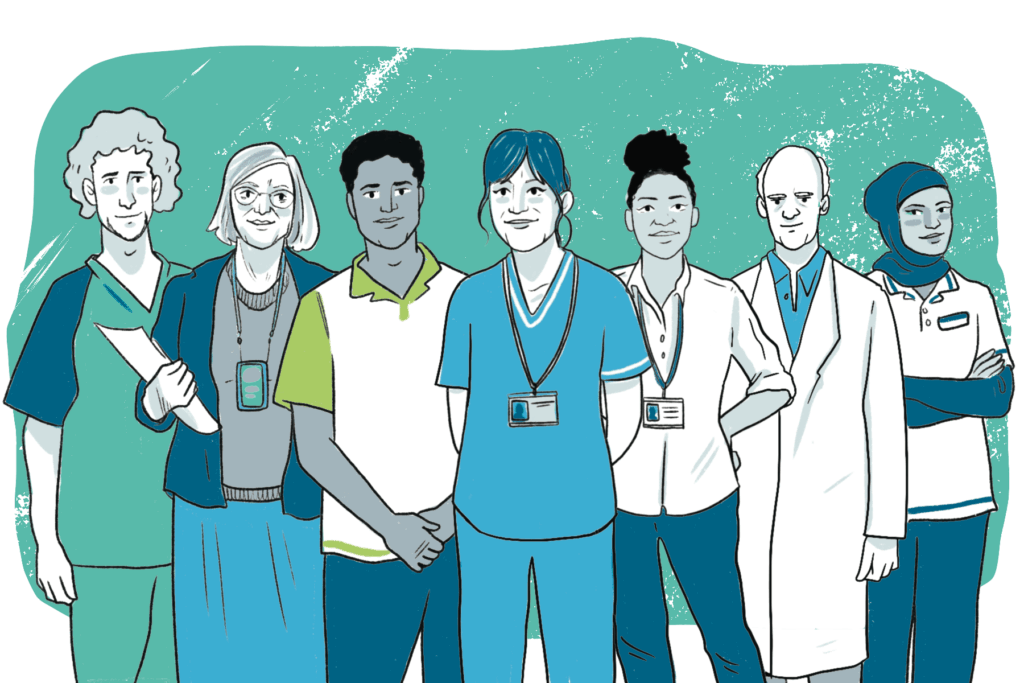Gene therapy for haemophilia B in the UK? Hold your horses!
After years on the track, gene therapy for haemophilia seems to have the home straights firmly in sight. Products for haemophilia A (Roctavian) and haemophilia B (Hemgenix) are licensed in Europe and the United States, and the first commercial doses have now been given. The remaining hurdles, however, are considerable: funding, reimbursement, and commissioning.
In August, the National Institute of Health and Care Excellence (NICE) published its draft guidance in response to CSL Behring’s application to commission Hemgenix in the UK through the NHS. Citing lack of long-term clinical evidence, uncertainty and cost-effectiveness, it stated:
“Etranacogene dezaparvovec is not recommended, within its marketing authorisation, for treating moderately severe or severe (congenital factor IX deficiency) in adults without a history of factor IX inhibitors (antibodies against factor IX).” [1]
This news was met with a level of disappointment within the community – and it certainly got the Haemnet team talking. We’ve mulled over how this decision was made, what it means for people with haemophilia in the UK, and whether NICE’s final guidance (due in November) will overturn it. Throughout, our discussions have been informed by learnings from our Exigency study, which explored views and experience of gene therapy with a range of stakeholders in the UK haemophilia community.
Nasty NICE?
Established in 1999, NICE’s remit to undertake technology appraisals of new interventions and to develop clinical guidelines was a response to concerns around a ‘postcode’ lottery in terms of access to medicines, variation in quality of care within the NHS, and the increasingly high cost of new treatments.[2] From the start, NICE has played a role in ‘prioritisation’.
NICE’s analysis of Hemgenix uses the language of ‘quality adjusted life years’ (or QALYs) and ‘incremental cost effectiveness’ to suggest that its economic cost is greater than can be justified by the likely level of benefit over existing treatments. This view was echoed, to an extent, by some Exigency participants. Many were enthusiastic about gene therapy, whether they had participated in clinical trials or not. But this was tempered with realism, largely based on being told repeatedly, over many years, how expensive haemophilia treatment is. Gene therapy for haemophilia comes with a big price tag – the assumption that this will outweigh any other consideration in deciding whether it will be available through the NHS is understandable.
Combined with this, existing treatments for haemophilia are pretty good. People with haemophilia in the UK are ‘well treated’ with therapies that reduce and protect against bleeding and the catastrophic impacts this can have on their health. Baseline quality of life (QoL) measured by generic or haemophilia-specific instruments is likely to be good – thus, it may be difficult to perceive any meaningful change to QoL following gene therapy.
Assigning a numeric value to QoL doesn’t show the full picture. What NICE’s draft guidance doesn’t indicate – but which came through clearly from Exigency participants who had received gene therapy – is that it can benefit QoL in ways that cannot be captured by standard instruments.
Access and equity
Despite access to ‘good’ treatment, people with haemophilia in the UK still bleed. Treatment burden and anxieties around their condition and its management impact QoL, and limitations or avoidance of particular activities due to haemophilia remain a part of daily life for many. Exigency participants who had undergone gene therapy described its outcomes as liberating.
The reason we know this is because we use in-depth qualitative interviewing in our mixed methods approach to researching the lived experience of bleeding disorders, including the impact of new treatments. The qualitative evidence we collect tells us that people with haemophilia in the UK still have unmet needs – more so than quantitative data alone can show. Will NICE look beyond standard quality of life tools in its final assessment?
Interestingly, NICE’s appraisal raised concerns about equity in terms of women’s access to Hemgenix gene therapy. Women with haemophilia are rarely considered in clinical trials for new therapies – our Cinderella study shows this exclusion impacts their ability to access treatments,[3] and Exigency findings echo this in the case of a woman with severe haemophilia.[4] In Exigency, concerns around access to gene therapy focused primarily on equity in regional provision, based on participants’ perceptions of their current access to different therapeutic options.
It’s difficult to disagree with the lack of long-term clinical evidence cited in NICE’s draft decision. But we have seen and heard evidence of positive results from haemophilia gene therapy, and would reiterate that taking patient lived experience into account is key, both now and in the longer term.
Dilemmas each way
If the draft NICE guidance is upheld, haemophilia gene therapy in the UK will continue to be restricted to clinical trials. This raises an interesting moral question. Is it right to conduct clinical trials in a market that is unwilling to implement the results of those trials into practice? And if clinical trials are the only way to access gene therapy, will this change the nature of the people entering them, possibly introducing a bias?
NICE has previously accepted high cost gene therapies and on balance we believe the draft guidance will not stand. Between 2010 and 2018, the majority of single technologies receiving a negative preliminary recommendation – mostly based on cost-effectiveness and uncertainties – were subsequently commissioned.[5]
But that raises a different set of issues.
The National Haemophilia Database shows 507 men with haemophilia B who are potentially eligible for treatment with Hemgenix, a small number of whom (maybe 15-20) have already had gene therapy as part of a clinical trial. Whether looking at list price per treatment or a commercial arrangement, it is costly – so would the number of people treated in a non-trial setting be capped? And if so, how will those eligible be selected? And by whom?
We’ve heard much about the hub and spoke model for delivering gene therapy, and there is a clear logic to such a system. But what happens if someone is keen to have gene therapy but lives far from a spoke, let alone a hub? In the event that Hemgenix is commissioned, more questions around equity and access can be expected.
Whichever way the final NICE decision goes, we will be watching with interest and banging the drum for equitable access to treatment.
References
- NICE. Draft guidance consultation: Etranacogene dezaparvovec for treating moderately severe or severe haemophilia B. 2 August 2023. Available from: https://www.nice.org.uk/guidance/indevelopment/gid-ta10699/documents (accessed 19 September 2023).
- Rawlins MD. National Institute for Clinical Excellence: NICE works. J R Soc Med 2015; 108(6): 211-19. doi: 10.1177/0141076815587658
- Khair K, Pollard D, Steadman L, Jenner K, Chaplin S. The views of women with bleeding disorders: Results from the Cinderella study. Haemophilia 2022; 1-10. doi: 10.1111/hae.14514
- Fletcher S. “I didn’t know women could have haemophilia”: A qualitative case study. J Haem Pract 2022; 9(1): 85-95. doi: 10.2478/jhp-2022-0011
- Walton MJ, O’Connor J, Carroll C, et al. A review of issues affecting the efficiency of decision making in the NICE single technology appraisal process. Pharmacoecon Open 2019; 3(3): 403-410. doi: 10.1007/s41669-018-0113-0
If you would like to know more about our Exigency study and why we think mixed methodologies benefit research in rare disorders, email us at research@haemnet.com


